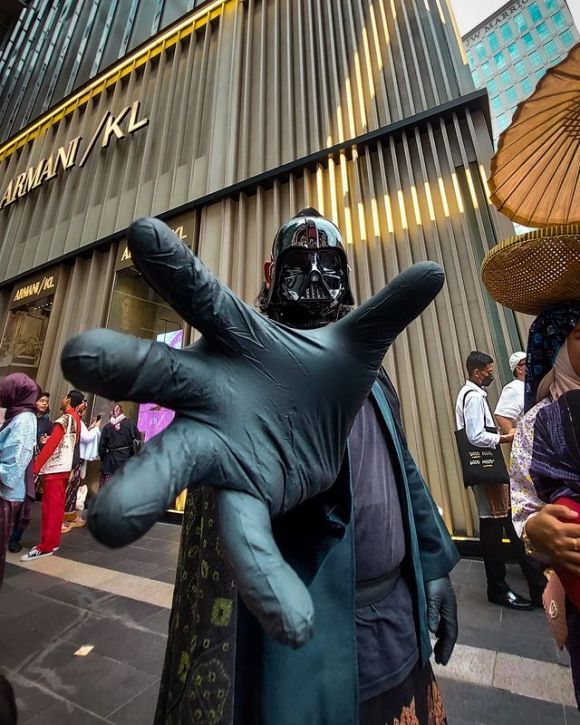Kuala Lumpur and its neighboring cities (Shah Alam, Putrajaya, Cyberjaya) are home to some of Malaysia’s most striking mosques—each offering a window into local faith, history, and design. This guide highlights the must-see ones, what makes them special, and how to visit respectfully.
Why Visit Mosques in KL?
Religious sites are living cultural spaces. In Malaysia—where most citizens are Muslim—mosques are community anchors that also showcase the country’s design heritage: from Mughal-inspired arches and Ottoman domes to bold post-independence modernism. Visit to appreciate architecture, learn local customs, and enjoy serene urban oases.
Visitor etiquette (essential): Dress modestly (shoulders/knees covered), remove shoes before prayer halls, keep voices low, avoid visiting during main prayer times (especially Friday noon), and follow on-site guidance. Some mosques loan robes for visitors.
Masjid Negara (National Mosque)
The National Mosque (Masjid Negara) of Malaysia is a mosque that has a capacity for 15,000 people and is situated among 13 acres of gardens. Its key features are a 73-metre-high minaret and a 16-pointed star concrete main roof. The umbrella, synonymous with the tropics, is featured conspicuously – the main roof is reminiscent of an open umbrella, the minaret’s cap a folded one. The folded plates of the concrete main roof are a creative solution to achieving the larger spans required in the main gathering hall. Reflecting pools and fountains spread throughout the compound.
Completed in 1965, the mosque is a bold and modern approach in reinforced concrete, symbolic of the aspirations of a then newly independent nation.


Location: Jalan Perdana, Tasik Perdana, 50480 Kuala Lumpur.
masjidnegara.gov.my | Instagram
Masjid Jamek Sultan Abdul Samad
Officially Sultan Abdul Samad Jamek Mosque and commonly known as Masjid Jamek is one of the oldest mosques in Kuala Lumpur. It is located at the confluence of the Klang and Gombak River which is also the popular River of Life attraction. The mosque was designed by Arthur Benison Hubback and built in 1909.
The design of the mosque has been described as a Moorish, Indo-Saracenic or Mughal architecture. The mosque has 2 main minarets among other smaller ones; the pattern of pink and white banding of the minarets, formed of brick and plaster, has been described as “blood and bandage”. The mosque was refurbished in 1984 and the minaret nearest the river was underpinned as it was already sloping.


Location: Jalan Tun Perak, City Centre, 50050 Kuala Lumpur.
Masjid Wilayah Persekutuan (Federal Territories Mosque)
The Federal Territories Mosque was constructed between 1998 and 2000. It is situated on a five hectare site near the Government Office Complex along Jalan Duta.
The mosque’s design is a blend of Ottoman and Malay architectural styles, heavily influenced by the Blue Mosque of Istanbul, Turkey. It has 22 domes made from a composite material of glass fibre fabric mixed with epoxy resin to make it durable and light.


Location: Jalan Sultan Mizan Zainal Abidin, Kompleks Kerajaan, 50480 Kuala Lumpur.
masjidwilayah.gov.my | Instagram
Masjid Sultan Salahuddin Abdul Aziz Shah
The Sultan Salahuddin Abdul Aziz Shah Mosque is the state mosque of Selangor and located in the state’s capital, Shah Alam. It is the country’s largest mosque and also the second largest mosque in Southeast Asia by capacity. Its most distinguishing feature is its large blue and silver dome. The mosque has four minarets, one erected at each of the corners.


Location: Seksyen 14, 40000 Shah Alam, Selangor.
Masjid TNB Bangsar
The Masjid TNB Bangsar is officially named as Kompleks Balai Islam An-Nur, which is built by the TNB, the electric utility company of Malaysia.
Partially funded by the employees of the TNB, the religious building features modern and contemporary architecture designs. It also incorporates environmental sustainability by implementing environment-friendly features that adheres to the Green Building Initiative’s (GBI) criteria.


Location: Off, Jalan Bangsar, Bangsar, 59100 Kuala Lumpur.
Masjid Tuanku Mizan Zainal Abidin
The Tuanku Mizan Zainal Abidin Mosque or also known as the Iron Mosque is the second principal mosque in Putrajaya. It is located in Putrajaya’s Precinct 3, opposite the Palace of Justice and next to the Islamic Complex Putrajaya, a religious authority headquarters.
The “Iron Mosque” features a district cooling system, and fans or an air conditioning system. The main entrance is strengthened with glass reinforced concrete to increase the integrity of the structure and uses fine glass to create an illusion of a white mosque from afar.
The path towards the mosque crosses a skyway known as the Kiblat Walk which stretches an area of 13,639 m². This skyway contains landscaping adapted from the ancient castles of Alhambra. The interior is decorated with Al-Asmaul-Husna calligraphy of the Thuluth variation. The entrance to the main prayer hall is adorned with verse 80 of SuraAl-Isra from the Qu’ran.


Location: Jalan Tuanku Abdul Rahman, Presint 3, 62000 Putrajaya.
masjidtuankumizan.gov.my | Instagram
Masjid Putra
The Putra Mosque is the principal mosque of Putrajaya and it is located next to Perdana Putra, which houses the Malaysian Prime Minister’s office and man-made Putrajaya Lake.
The pink-domed Putra Mosque is constructed with rose-tinted granite and consists of three main functional areas – the prayer hall, the Sahn, or courtyard, and various learning facilities and function rooms. The mosque can accommodate 15,000 worshippers at any one time.


Location: Pusat Pentadbiran Kerajaan, Presint 1, 62502 Putrajaya.
masjidputra.gov.my | Instagram
Masjid Raja Haji Fi Sabilillah
The Raja Haji Fisabilillah Mosque or Cyberjaya Mosque is a principal mosque in Cyberjaya. This modern futuristic mosque was named after Raja Haji Fisabilillah ibni Daeng Chelak, a Bugis warrior from Penyengat Island, Indonesia. He was also the Yang Dipertuan Muda (Crown Prince) of the Johor-Riau Sultanate from 1777 to 1784.


Location: Persiaran Semarak Api, Cyberjaya, 63000 Cyberjaya, Selangor.

















































































































